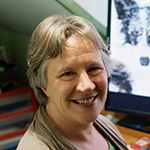In this two-part article, Sue Littleford takes a fresh look at time management. She starts by covering the diagnosis – how much time you actually have – then goes on to examine what can go wrong with time management, and how to counter this.
For freelancers, without the discipline of a line manager breathing down your neck and looking over your shoulder at what’s on your screen, without the structure of fixed working hours, time-management skills can get a bit flabby.
Time management boils down to three main elements: knowing how much time you have; knowing how much time you need; and not messing things up. In this article, we’ll take a look at the first two, and in a separate article, we’ll run through the not-messing-things-up aspect (this turned out to be a subject on which I had a lot to say!)
Knowing how much time you have
Take a good hard look at your week. How much time is available to work? How much time – and when – does your family need? How much time – and when – do other commitments take? How much time do you need for the essentials – eating, sleeping, household tasks? How much downtime do you need? Pro tip: do not skimp on sleeping time or relaxation time.
How about your month? Your year? Figure out how much time is available for work. That may vary from day to day, from week to week, as other commitments and wishes take priority. But come up with a basic work diary that will show you your work time, and block out the time you need for everything else. If you have holidays in mind, into the diary they go.
Researchers have figured out that five hours per day of intensive work is all you’re going to do, healthily, if you want to have a long-term career without burnout.
Do you use the popular Pomodoro technique of 25 minutes’ work then a 5-minute break? I don’t. The brain starts to lose concentration after around 45 minutes. But did you know it takes more than 20 minutes to get back into a deep-work state?
Those two figures together mean I’m not a fan of Pomodoro. Editorial work is deep work, and breaking off halfway through my capacity to concentrate, only to take most of the next work period to get back into the flow, is anything but helpful for time management. I’ve found I come up for air at around 50–65 minutes, so that’s when I take a break. I get much more work done than when I was trying to work to the Pomodoro timings.
In an ideal world, you’d arrange your work to suit your personal rhythm – are you a morning person or an evening one? It’s useful to know when you find it easiest to concentrate and work efficiently and effectively, but in some people’s lives, that’s a luxury for some future year.
Cal Newport’s Deep Work: Rules for Focused Success in a Distracted World is an excellent read for people doing editorial work.
Taking holidays: Respecting yourself
When you think of scheduling time off, what barriers do you put up? That clients will never approach you again if you’re away when they contact you? (Answer: let clients likely to contact you know you’re going to be away from your desk. One person I spoke to about this suggested putting your holiday dates in your email signature – neat. And learn how to turn on your out-of-office autoresponder for your email. Clients take holidays themselves: they’ll understand.)
Or do you have FOMO – fear of missing out – on a plum job?
Or perhaps you feel you can’t afford it. That’s more likely in the early years when you’re building up your business – especially if you’re the only or principal breadwinner. If you’re not at work, you’re not earning. That’s an argument for ensuring your fee rates cover not-work time as well as all your other overheads, something I wrote about on my own blog (the key bit is towards the end of the article).
It’s sage advice to add to your cushion of cash whenever you can – a counsel of perfection, I know, but one worth aiming for. Part of that cushion is for non-working times, whether that’s voluntary holidays, work famines or some other rainy-day need.
If you fail to take holidays because the client always comes first, then it’s time to set yourself some personal boundaries, and learn to respect yourself, and them. It’s far healthier, mentally and physically.
People who don’t have partners or children at home probably find it easier to cave in and fill a holiday week with work than those who have given commitments to other people. If this is you, is there someone you could give an equivalent commitment to? If you’re not going away, then perhaps you could book in some activities or trips with a friend?
Knowing how much time you need
Now you know how much time you have for work, how much work can you take on to fill that time? It bears repeating – do not plan to work 100% of your available time. You’ll need a buffer for the unexpected. If you are fully committed, every moment of your waking life, where’s your capacity to cope if something happens off-schedule? If you catch a bad cold, let alone anything more time-consuming?
If you’re worried about having gaps in your diary, know that you can fill them with marketing, with training or continual professional development, with reviewing your processes – all things that contribute to your business, but that are less riveted to the spot in terms of deadlines. It also leaves you the capacity perhaps to say yes to an unexpected job offer if you want to.
Know your work speed if you want to schedule jobs accurately
I started keeping stats on my work throughput as part of my invoicing system when I started freelance editing in 2007. I’ve made various improvements since then, and you’ve seen the result in the Going Solo toolkit’s business records.
After years of data collection, I know how fast I usually work on different kinds of material, what my slowest is, what my fastest is, how work from repeat clients is likely to absorb my time – all kinds of essential information.
I have, essentially, a database to compare new jobs to, which will tell me how much time I’m likely to need (and then I add wiggle room). But from the moment you record your first job, you’re on your way to building up your own database, which will just get more and more useful.
Without information on how long things take, you can’t schedule work with confidence, because you’re basically guessing.
Now you know how much time you have available, and how long various kinds of work take. If you’ve taken my advice, you’re not trying to squeeze a quart into a pint pot (a litre into a half-litre pot doesn’t have quite the same ring, does it?).
Planning a timetable
Rough out a timetable with milestones, so you know how far through the job you need to be every two or three days. It will help you work out whether the deadline is feasible, and it will draw some lines in the sand so you’ll know if you start to lag behind.
For books, I do this by printing out the contents page, and noting how many pages in each chapter, then use my knowledge of my work speed to figure out how long each chapter will take me. Then I assign each chapter to a day, or two days, depending on length and complexity.
For articles and other short pieces of writing, this isn’t nearly so complicated, but if you’re doing a lot on a fast turnaround, treat each piece as part of a larger whole – do you have to finish three today and three by the end of the week? There’ll be some kind of expectation, so jot it down so you know that you’ve done enough for today, or that you need to make an earlier start tomorrow.
There’s no need to draw up fancy charts, which themselves are time-consuming to produce. But do remember to fit your timetable around your other commitments – it has to be realistic (and include some wiggle room, of course).
Ready to read Part II of this article?
Over to you
What time-management ploys have worked for you? Tell us in the comments!
About Sue Littleford
 Sue Littleford is the author of the CIEP guide Going Solo, now in its second edition. She went solo with her own freelance copyediting business, Apt Words, in March 2007 and specialises in scholarly humanities and social sciences.
Sue Littleford is the author of the CIEP guide Going Solo, now in its second edition. She went solo with her own freelance copyediting business, Apt Words, in March 2007 and specialises in scholarly humanities and social sciences.
 About the CIEP
About the CIEP
The Chartered Institute of Editing and Proofreading (CIEP) is a non-profit body promoting excellence in English language editing. We set and demonstrate editorial standards, and we are a community, training hub and support network for editorial professionals – the people who work to make text accurate, clear and fit for purpose.
Find out more about:
Photo credits: header image by Agê Barros, beach holiday by S’well, diary by Jeshoots, all on Unsplash.
Posted by Belinda Hodder, blog assistant.
The views expressed here do not necessarily reflect those of the CIEP.











